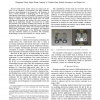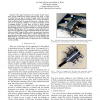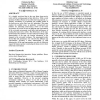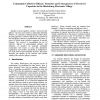1338 search results - page 78 / 268 » Understanding Social Robots |
ICRA
2009
IEEE
14 years 4 months ago
2009
IEEE
Abstract— Skid-steered mobile robots are widely used because of the simplicity of mechanism and high reliability. However, understanding of the kinematics and dynamics of such a ...
ICRA
2006
IEEE
14 years 3 months ago
2006
IEEE
Abstract— This paper introduces the concept of gait transitions, acyclic feedforward motion patterns that allow a robot to switch from one gait to another. Legged robots often ut...
CHINZ
2006
ACM
14 years 3 months ago
2006
ACM
It is virtually envisioned that in the near future home-service robots will be assisting people in their daily lives. While a wide spectrum of utility of home-service robots has b...
HRI
2006
ACM
14 years 3 months ago
2006
ACM
The design and development of social robots that interact and assist people in daily life requires moving into unconstrained daily-life environments. This presents unexplored meth...
HICSS
2003
IEEE
14 years 2 months ago
2003
IEEE
Bandura’s social cognitive construct “perceived selfefficacy” has been used widely to understand individual behavior as a function of domain-specific beliefs about personal ...




